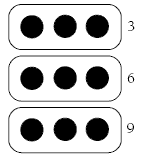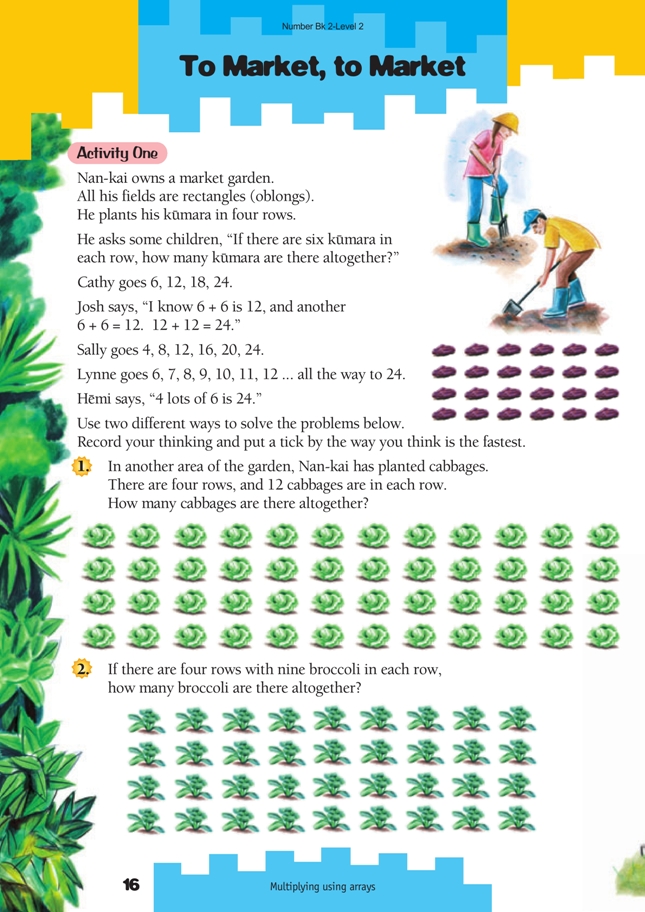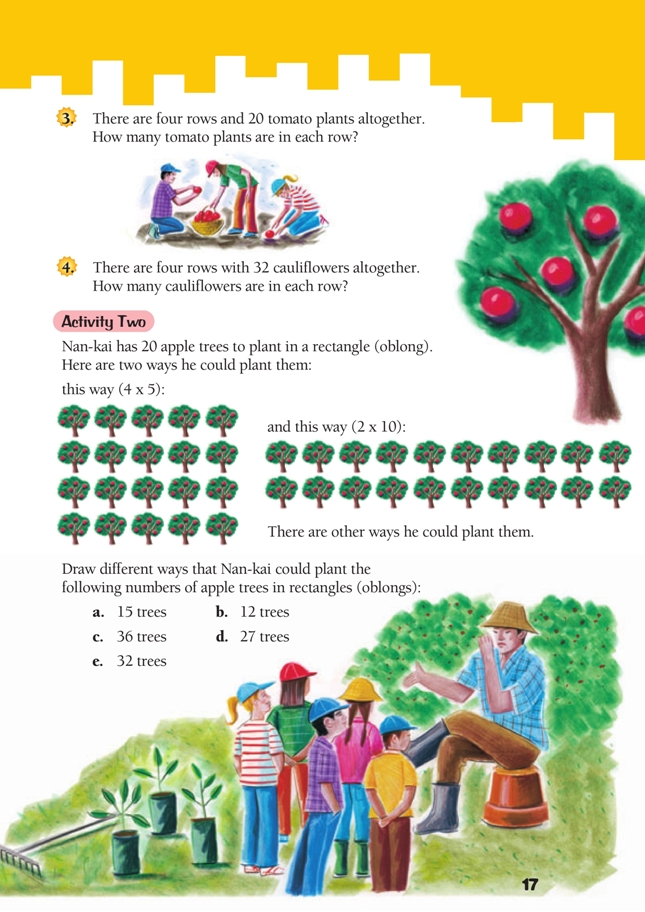This is a level 2 number activity from the Figure It Out series. It relates to Stage 5 of the Number Framework.
A PDF of the student activity is included.
Click on the image to enlarge it. Click again to close. Download PDF (800 KB)
use arrays to solve multiplication problems
These activities are designed to make students familiar with arrays and encourage them to use arrays to develop their multiplication strategies.
The students need to be able to skip-count in multiples of 2, 5, and 10 and to use doubling to solve multiplication problems. Lots of class or group practice with skip-counting games is a good warmup for this activity.
Another useful warm-up is to give the students worksheets of arrays to count and ask them to circle the multiples they counted in. Ask them to discuss how they counted their arrays. They could also record the numbers beside each circle.

Activity One
Use a bead frame abacus to model the four rows of six kùmara in the example in this activity. Discuss the different strategies each person used and model what they did on the bead frame. Move the beads and count in sixes and fours, show doubles, and count on in ones from 6.
Make up some other simple problems and encourage the students to use a particular strategy, for example, 5 rows of 3, 7 rows of 2, or 4 rows of 4.
Discuss the strategies that the students used and ask them to explain why the strategy they ticked was the fastest for them. They may need to draw the arrays for questions 3 and 4.
Activity Two
You will need to model this activity first and give the students plenty of opportunity to make different arrays to represent the same number. You could give the students a blank grid and counters to help them to stay organised with their arrays. Once they have experimented, they could draw their arrays for the activity and write the corresponding multiplication facts beside their drawings.
Answers to Activities
Activity One
1. 48. Methods will vary. Teacher to check
2. 36. Methods will vary. Teacher to check
3. 5. Methods will vary. Teacher to check
4. 8. Methods will vary. Teacher to check
Activity Two
a. 1 row of 15 ❂❂❂❂❂❂❂❂❂❂❂❂❂❂❂
3 rows of 5
❂❂❂❂❂
❂❂❂❂❂
❂❂❂❂❂
5 rows of 3
❂❂❂
❂❂❂
❂❂❂
❂❂❂
❂❂❂
15 rows of 1
❂
❂
❂
❂
❂
❂
❂
❂
❂
❂
❂
❂
❂
❂
❂
b. 1 row of 12
2 rows of 6
3 rows of 4
4 rows of 3
6 rows of 2
12 rows of 1
c. 1 row of 36
2 rows of 18
3 rows of 12
4 rows of 9
6 rows of 6
9 rows of 4
12 rows of 3
18 rows of 2
36 rows of 1
d. 1 row of 27
3 rows of 9
9 rows of 3
27 rows of 1
e. 1 row of 32
2 rows of 16
4 rows of 8
8 rows of 4
16 rows of 2
32 rows of 1

